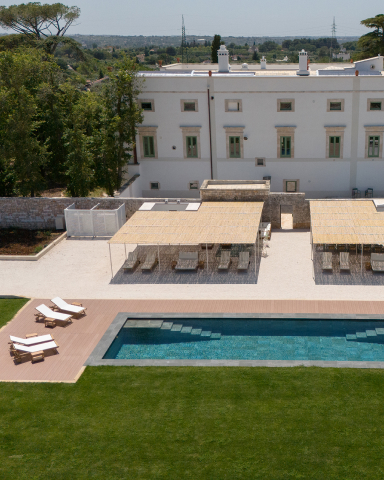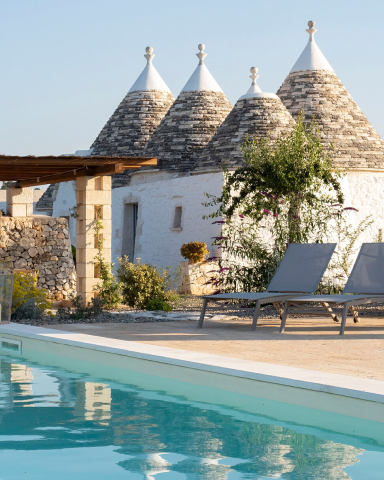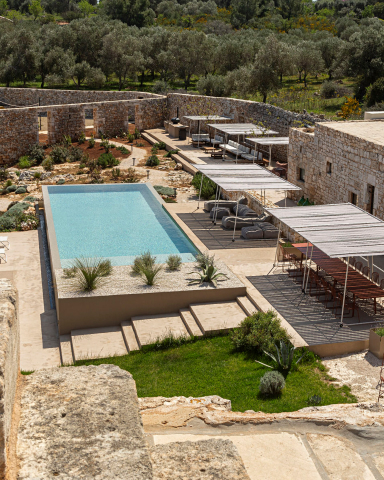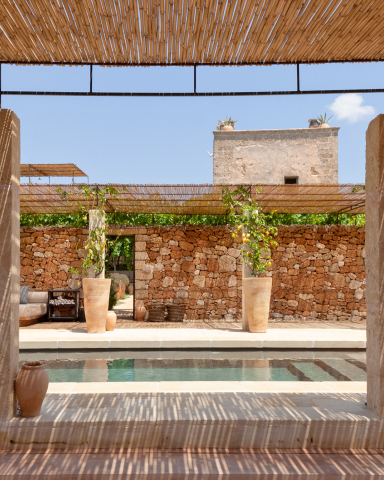Archaeological Sites in Puglia: Ancient Treasures of Southern Italy

Puglia has always been a frontier region, a fault-line departure point for those heading to the eastern Mediterranean. Millions of Roman legionaries, Crusaders, pilgrims, traders and travellers have embarked in the ports of Bari, Brindisi and Otranto and set sail across the Adriatic Sea to the Balkans, or tacked south to the Ionian Sea and onwards towards Greece, Turkey, and the Holy Land.
Often, Puglia has also been the first port of call for those arriving from the eastern Mediterranean, from the Greek settlers of the 8th century BCE to the Ottoman armies and Saracen pirates that harried and hounded the frontiers of western Europe for hundreds of years. Anyone keen on exploring this busy history of comings-and-goings, need only visit a few of Puglia's fascinating archaeological sites, such as the ones below.
Best Archaeological Sites in Puglia
Egnazia
Ancient Gnathia, located on the Adriatic coast close to Savelletri, was once a thriving commercial Roman town. The Via Traiana ran close to it, one the way to Brindisium, meaning that its port was perfectly placed for trade with the Balkans, Greece and the Middle East.
But Egnazia’s history goes back way beyond Roman times. Indeed, it appears to have first been settled in the Bronze Age and subsequently inhabited by the invaders from across the Adriatic, Messapians and Greeks.
The archaeological site has a great deal to see, from the Messapian walls and burial chambers, to the layout of the Roman town, which includes a cryptoporticus (an underground passageway and sanctuary), and remnants of monuments, houses, a market square, a Basilica, and a section of the Via Traiana. An adjacent museum houses a good collection of finds from the various excavations carried out over the last 100 years.
Canosa
One of the most fascinating, various and illuminating archaeological sites in Puglia is Canosa, whose treasure trove includes 7th-century BCE Dauni burial chambers, Greek and Roman remains, Byzantine basilicas and even a Norman tomb. Situated 20km inland from Barletta on the northern Adriatic coast of Puglia, Canosa is close to Canne della Battaglia (see following section), so a trip to the area can easily incorporate both sites.
Canosa’s magic lies in the fact that the present-day town is actually part of a larger archaeological complex. In the centre, ancient remains intermingle with cafés, shops, piazzas and residential areas, so while wandering the streets, you'll come across the remains of a 6th-century CE baptistry, dedicated to San Giovanni, traces of the Via Traiana (110 CE circa), numerous underground burial sites dating from the 5th century BCE to the 1st century BCE (including the Ipogei Lagrasta, the Ipogeo Cerbero, and the Ipogeo Casieri), the 12th-century mausoleum of the Norman prince Bohemond I of Antioch (leader of the First Crusade and son of Count Robert Guiscard, Count of Puglia), three towers of a castle perched on a hill where an ancient acropolis once stood, a mosaic floor of a Roman bathhouse, and a pair of museums - the Museo Archeologico Nazionale di Canosa and the Museo Archeologico di Iliceto.
Along the main road leading into town from the northwest (originally the Via Traiana itself) there are two more fascinating sights: the grandiose Arch of Trajan (built in about 110 CE) and a Roman bridge over the river Ofanto (dating from the same period). While this latter has been rebuilt several times over the centuries, the mighty piers and buttresses have retained some of their Roman features.
Just 1km south of the town centre, meanwhile, is a dedicated archaeological site, the Parco Archeologico San Leucio. The star of the show here, sitting atop a hill looking over the town, is a 6th-century CE Byzantine-style basilica, the largest example of Paleochristian architecture in Puglia. The basilica fills the footprint of its predecessor, a Graeco-Roman temple dedicated to the cult of Minerva Athena Ilias. Its surviving capitals can be found in the site’s antiquarium.
If you wish to get a snapshot of two thousand years of Puglian history, Canosa is hard to beat.

Lecce
Canne della Battaglia
Canne della Battaglia (Cannae) is named after Hannibal’s great victory over the Romans in 216 BCE. Located about 10km inland from Barletta, the archaeological site sits atop its own hill, surveying the vast swathes of olive groves that surround it.
Little has survived from its pre-historic origins, but visitors can stroll around the streets admiring remains that run from early Roman times right through to the late Middle Ages. The Ostrogoths laid waste (almost) to the town after the fall of the Roman Empire, the Saracens did the same in the 9th century CE, and the Normans followed suit. Charles II of Angevin fortified the town once more, but eventually it was abandoned towards the middle of the 14th century.
Most of what visitors can see today dates back to mediaeval times, but there are always glimpses and echoes of other previous eras. Certain aspects of the town’s layout – such as the road running along an east-west axis - have distinct Roman origins (the decumanus maximus), and walls of Cyclopean masonry dating back to 5th century BCE alternate with mediaeval fortifications once belonging to the Angevin fortress. There are also remains of a Paleochristian basilica, various burial chambers and a later mediaeval church. A well laid-out antiquarium hosts a wide variety of finds from the site and a good deal of information about the history of what, when Hannibal trounced the Roman armies here, was briefly the centre of the western world.
Rudiae
Originally a Messapian settlement dating back to the 6th century BCE, Rudiae, like the rest of Puglia, came under the control of Rome at the beginning of the 3rd century BCE. The town would eventually reach its apogee some 500 years later, when an impressive amphitheatre was built.
The archaeological site of Rudiae is situated in the southwestern suburbs of Lecce, so a visit there could easily be added on to a day out in Salento’s capital. Excavations carried out in 2011 resulted in the remarkable discovery of the aforementioned amphitheatre, which, measuring 85m x 70m, could hold around 8,000 spectators. This is without doubt the main attraction, but visitors can also walk along ancient stone-flagged streets and admire a 3rd-century BC Hellenic underground burial chamber.

We're Villa Matchmakers
Because our local experts have personally visited each of our destinations, we know exactly what makes them special. Tell us what your ultimate villa holiday looks like, and allow us take care of the rest.




